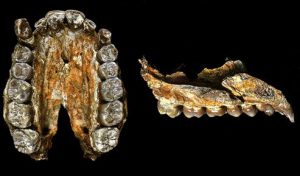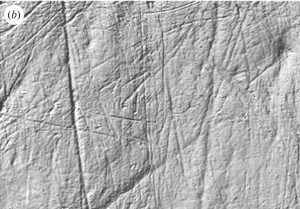Shortly after the attack on Pearl Harbor, president Franklin D. Roosevelt signed executive order #9066, authorizing the internment of Japanese Americans. Between 110,000 and 120,000 people of Japanese descent, 62% of whom were citizens, were displaced, mainly to 10 centers in the western interior of the US.
After WWII, most of the structures of the camps were dismantled, leaving little left to see to the untrained eye. To the archaeologist, however, the seemingly barren site contains invaluable information waiting to be uncovered through the examination of foundations, artifacts, trash pits, and landscape features. Archaeological excavations at the sites revealed, among other things, foundations of buildings, remnants of guard towers and fences, latrines, ceramics, Japanese games such as Go, and Japanese- style gardens. These artifacts tell stories about the daily lives of internees that are often left out of official histories and give a glimpse into how the people survived, both physically and emotionally.
The archaeology reveals that the camps’ inhabitants resourcefully found ways to make their environments more familiar and habitable. Traces of Japanese-style rock alignments, walkways, gardens, and ponds remain. In Amache, a camp in Colorodo, there is evidence that the internees repurposed water pipes as planters, used copper wire to train Chinese elms, and made the desert soil more fertile by adding eggshells, enabling them to grow traditional foods. The innovative ways in which the Japanese modified the landscape to reflect their cultural values shows a resistance to a government and an institution that tried to strip them of their heritage.
The large quantities of Japanese china and ceramics also show how the internees tried to maintain their cultural identities. Often, people were only allowed to bring what they could carry, so the presence of so many ceramics shows the importance of these items as a reminder of home, as tangible evidence linking them to who they used to be.
The evidence also helps to dispel pervasive myths and misconceptions about the camps. Some residents living near the camps, and others throughout the country, denied that there were guard towers or fences surrounding the camps and asserted that the inmates were “coddled” while other Americans suffered shortages and rations. The evidence once and for all proved these claims to be false.
In this case, archaeology can have a healing effect and provide a sense of closure and, perhaps most importantly, provide validation to those who were interned. It is important that this moment in history is remembered so that the same mistakes are not made in the future. Although the US has acknowledged that the internment camps were not based on military necessity but on prejudice and wartime hysteria, this dark moment of US history is not discussed as much as it should be. Hopefully the excavations can bring Japanese internment into the public conversation and illustrate that the issues that lead to it are still relevant and prevalent today, as racism, ethnocentrism, and balancing civil rights with national security continue to challenge the country.
Sources:
- http://encyclopedia.densho.org/print/Archaeology
- http://archive.archaeology.org/online/interviews/burton.html
- http://archive.archaeology.org/1105/features/world_war_II_internment.html
- https://link.springer.com/chapter/10.1007%2F978-1-4419-1072-1_11#page-1
- Image Sources
Additional Reading
- http://www.opb.org/news/article/archaeological-dig-resurrects-nearly-forgotten-wwii-internment-camp/
- http://westerndigs.org/first-japanese-american-labor-camp-from-world-war-ii-unearthed-in-idaho/
- http://popular-archaeology.com/issue/december-2011/article/archaeologists-return-to-world-war-ii-japanese-american-internment-camp





